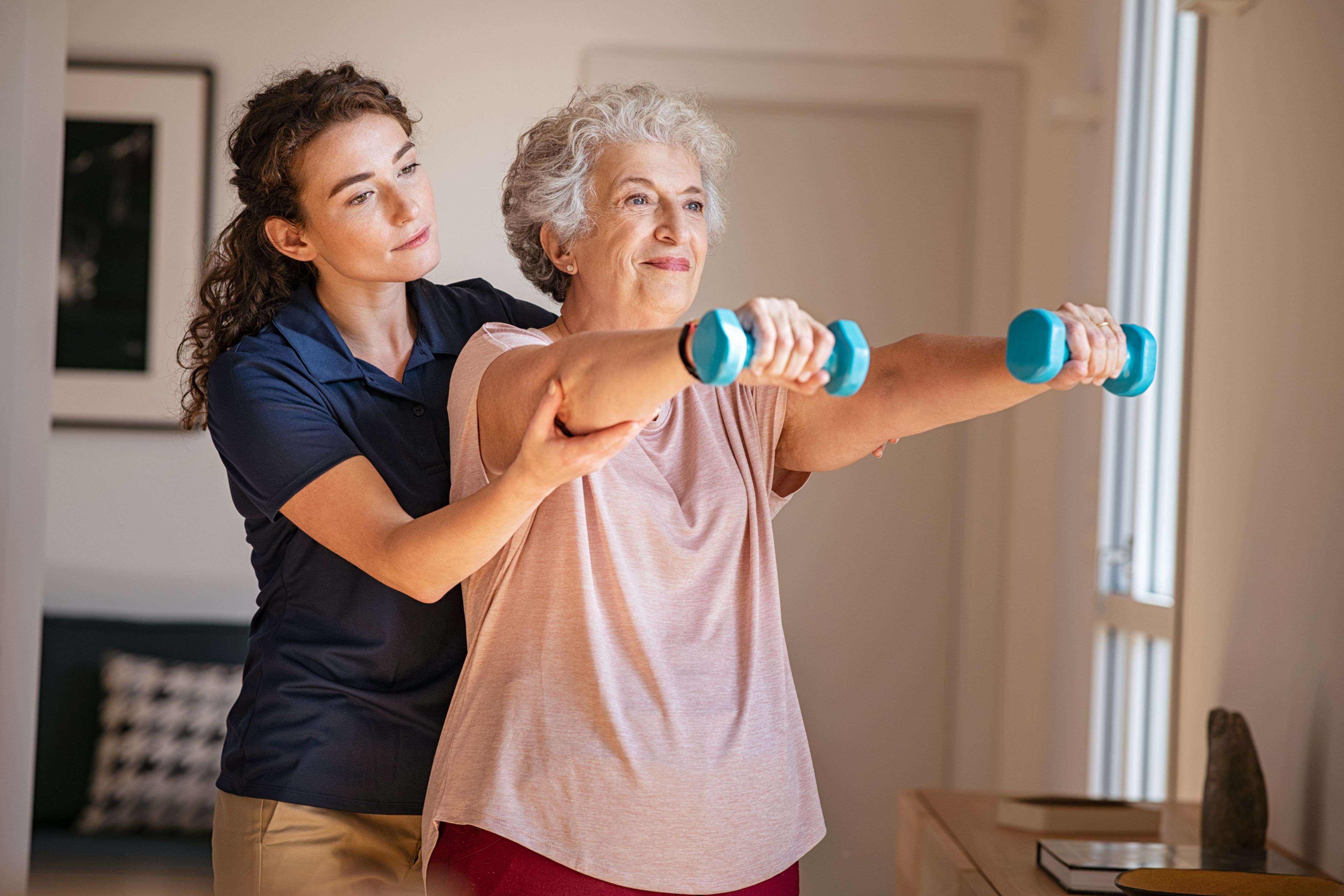
10 Simple Exercises Seniors Can Do at Home Without Equipment
Staying active at home is one of the best ways for seniors to maintain strength, balance, and independence, especially for those aging in place or recovering from surgery. But how can older adults exercise safely without special equipment or a gym? The answer lies in simple, low-impact exercises seniors can do at home, using just a chair, a wall, or a bit of open space. These movements help support daily function, reduce fall risk, and promote long-term wellness, without needing to leave the house.
In this post, we’ll explore 10 easy exercises for seniors that require no equipment, making them perfect for at-home routines at any mobility level.
Seniors can stay active at home without equipment by doing simple exercises like chair squats, leg raises, wall push-ups, and balance holds to maintain strength and mobility.
Why At-Home Exercise Matters for Older Adults
According to the CDC, older adults should aim for at least 150 minutes of moderate activity per week, along with balance and muscle-strengthening exercises on two or more days (source).
Staying active helps:
- Prevent falls and fractures
- Improve heart health and mood
- Reduce joint stiffness and pain
- Enhance daily function and independence
Related: 8 Tips to Make Exercise Safe for Seniors
10 No-Equipment Exercises for Seniors at Home
Each of the following exercises can be done with just a sturdy chair, wall, or a bit of open floor space.
1. Chair Squats
Strengthens legs, hips, and glutes
How to do it:
Stand in front of a chair, feet shoulder-width apart. Lower yourself slowly into a seated position, then stand back up. Use your arms for support if needed.
Reps: 8–12
2. Wall Push-Ups
Improves upper body strength and posture
How to do it:
Stand about two feet from a wall. Place hands on the wall at chest height and perform push-ups by bending and straightening your elbows.
Reps: 8–15
3. Heel-to-Toe Walk
Builds balance and coordination
How to do it:
Walk forward in a straight line, placing the heel of one foot directly in front of the toe of the other. Use a wall or counter for support if needed.
Time: 30–60 seconds
4. Seated Leg Raises
Strengthens thigh and core muscles
How to do it:
While seated upright in a chair, lift one leg straight out and hold for a few seconds. Lower it and repeat with the other leg.
Reps: 8–12 per leg
5. Neck and Shoulder Rolls
Ease stiffness and tension
How to do it:
Gently roll your shoulders backward and forward. Then slowly tilt your head side to side or in circles to stretch your neck.
Reps: 5–8 in each direction
6. Toe Taps
Boosts circulation and ankle flexibility
How to do it:
While seated, tap your toes on the ground repeatedly. You can alternate feet or do both together.
Time: 30 seconds
7. Side Leg Lifts
Improves hip strength and lateral balance
How to do it:
Hold onto a chair or wall and lift one leg out to the side. Keep your back straight. Lower it slowly and repeat.
Reps: 8–10 per leg
8. Seated Marching
Cardio and core activation
How to do it:
Sit tall in a chair and lift one knee at a time in a marching motion. Add arm swings for extra engagement.
Time: 1–2 minutes
9. Wall Sits (Modified)
Builds leg endurance
How to do it:
Stand with your back to a wall and slide down slightly until you’re in a half-seated position. Hold for 10–20 seconds.
Reps: 3–5 holds
10. Balance Hold
Enhances steadiness and confidence
How to do it:
Stand behind a chair. Hold the backrest and lift one foot off the floor slightly. Hold for 10 seconds, then switch feet. Progress to hands-free if able.
Reps: 3 holds per side
Tips to Stay Safe While Exercising at Home
- Always warm up with light stretches
- Use a sturdy chair or wall for support
- Stop if you feel pain, dizziness, or shortness of breath
- Keep water nearby and wear safe footwear
Learn more in How to Create a Long-Term Care Plan for Your Loved One
Staying Active is Also Good for the Mind
Physical movement supports not just the body—but also the brain. Gentle exercise has been shown to:
- Reduce depression and anxiety
- Improve sleep
- Boost memory and cognitive function
Related: Why Hydration and Nutrition Matter in Palliative Support
Final Thoughts: Keep It Moving, Keep It Simple
You don’t need a treadmill or a gym to stay active as you age. With a few simple movements each day, seniors can build strength, improve balance, and boost confidence—right from the comfort of home.
Whether you’re recovering from a procedure or just trying to stay mobile, the key is consistency, not intensity.
Looking for more aging-in-place tips and senior wellness guides?
Explore our full blog library for resources on safe home care, nutrition, mental health, and more.
